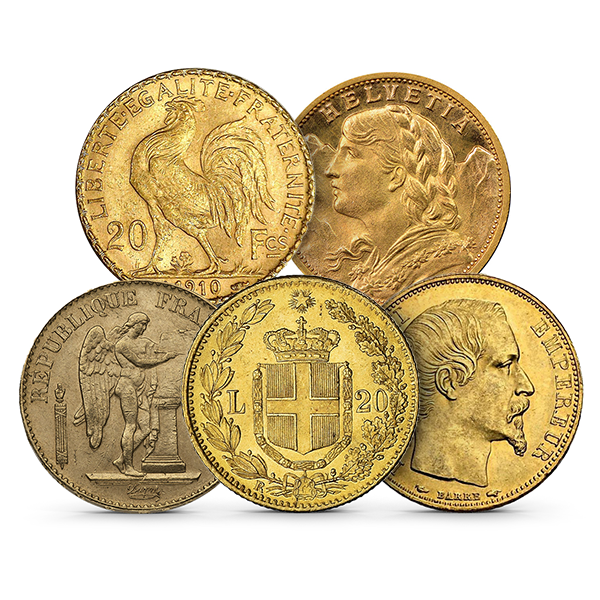Your cart is empty
Latin Monetary Union 20 Franc/Lira Gold Coins – Type and date of our choosing
CALL FOR PRICING
The Latin Monetary Union (LMU) was established in 1865 and included France, Belgium, Switzerland, and Italy, among other countries. It aimed to create a common monetary system based on the gold and silver standard.
The gold coins of the LMU typically featured:
Design: Most coins displayed national symbols or notable figures, often with intricate designs. Common motifs included allegorical representations of Liberty, national emblems, or portraits of monarchs.
Specifications: The gold coins were generally minted in denominations like 20 francs (France/Switzerland/Belgium), 20 lire (Italy), and similar values in other member countries, containing 0.1867 Troy ounces of pure gold.
Composition: They were typically composed of 90% gold and 10% alloy, ensuring durability while maintaining a high gold content.
Circulation: These coins were intended for international trade within the member countries, facilitating easier commerce and exchange.
Decline: The union began to dissolve in the late 19th century as countries shifted to different monetary policies, but the coins remain significant as historical artifacts representing a unique effort at monetary cooperation.
Collectors today value these coins for their historical importance and artistry, while investors see them as a desirable alternative to similarly-sized bullion coins.
These coins range in condition from XF to BU.
Manufacturer: Various Mints/Refineries
SKU: LMU20FRC
